Putting it in Drive
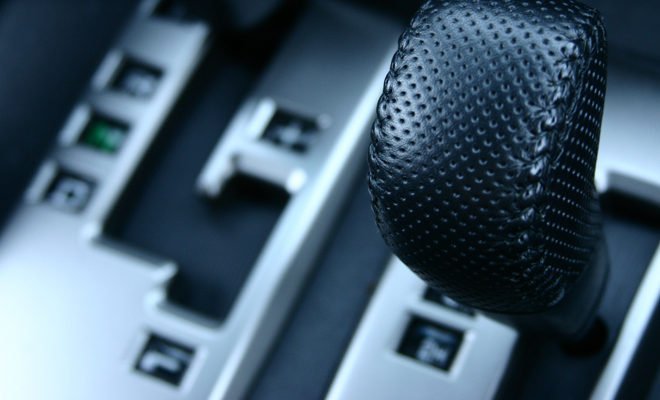
From trucks and SUVs to compact cars and sedans, your vehicle’s drivetrain system helps power you down the road. Also referred to as the driveshaft, it is responsible to transfer torque and engine rotation into vehicle motion when you shift into drive.
What are the different types of drivetrains?

The type of vehicle you drive dictates what kind of drivetrain system is in your vehicle. There are different systems for rear-wheel drive, four-wheel drive and front-wheel drive vehicles.
Rear-wheel drive (RWD)
In a rear-wheel drive vehicle, the rear wheels deliver the power. A long driveshaft is connected to the transmission on one end and the differential on the other end by universal joints.
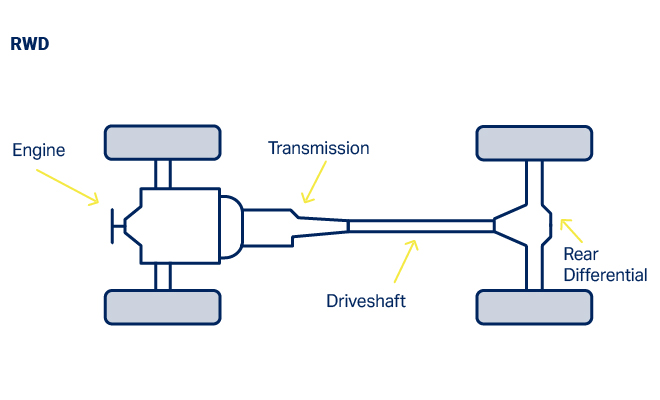
Four-wheel (4WD) or all-wheel drive (AWD)
On a typical four-wheel drive or all-wheel drive vehicle, there are two driveshafts. There is the same driveshaft that is on a rear-wheel drive car but there is also an additional front driveshaft that is connected to the front differential and the transfer case by u-joints.
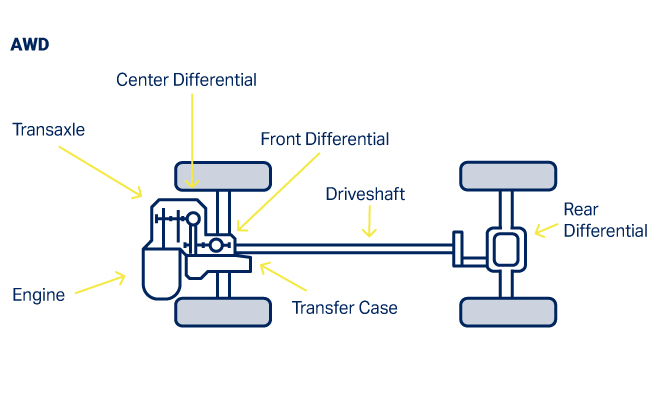
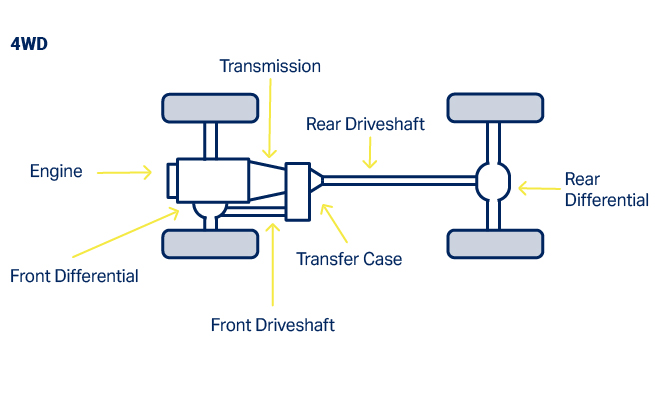
Front-wheel drive (FWD)
On a front-wheel drive vehicle, the front wheels provide the power. Instead of having a long driveshaft like on a rear-wheel vehicle, all the drivetrain components are in the front of the vehicle. Rather than using universal joints, this setup uses constant velocity (CV) joints.
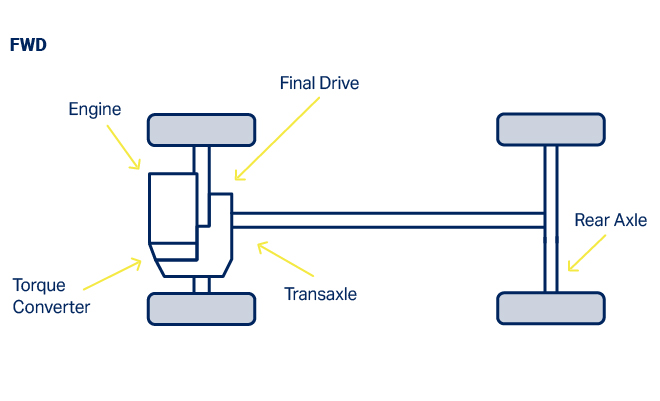
Signs of a bad driveshaft/drivetrain
A bad or failing driveshaft can make it difficult to control your vehicle. Read on to learn what signs and symptoms you should be on the lookout for. If your car exhibits any of these conditions, a trip to your mechanic is in order; they have the know-how to diagnose and fix your driveshaft problems.
Vibrations from under the vehicle
A common symptom of a failing driveshaft is an intense shaking coming from underneath the vehicle. Worn out u-joints, couplers or carrier bearings can cause the driveshaft to vibrate. If you don’t get these components serviced, it can lead to further damage to other drivetrain components.
Difficulty turning
If you’re having trouble making turns, it could be a u-joint issue. A failing u-joint can prevent the wheels from properly turning, making it difficult to control the vehicle.
Loud clunking noise
If you hear a loud clunking noise when shifting your vehicle, this is another sign of driveshaft damage. The likely culprit is a worn u-joint.
Car shudders upon acceleration
If you experience shuddering when accelerating from a stop or low speed, a loose u-joint or bad carrier bearing could be to blame.
Squeaking noise
Not just annoying, a squeaking noise at low speeds can be caused by a u-joint that needs lubricating. A little bit of grease will get rid of the noise as long as the u-joint does not show signs of excessive wear.
Clicking or knocking noise
Can indicate a worn or failing CV joint. See your mechanic for a repair.
Learn more about premium steering and suspension parts, find your car part, or find where to buy your auto part today.
The content contained in this article is for informational purposes only and should not be used in lieu of seeking professional advice from a certified technician or mechanic. We encourage you to consult with a certified technician or mechanic if you have specific questions or concerns relating to any of the topics covered herein. Under no circumstances will we be liable for any loss or damage caused by your reliance on any content.
Other Parts For Your Vehicle
MOOG® offers a wide variety of auto parts for all your vehicle needs.
Check them out today!